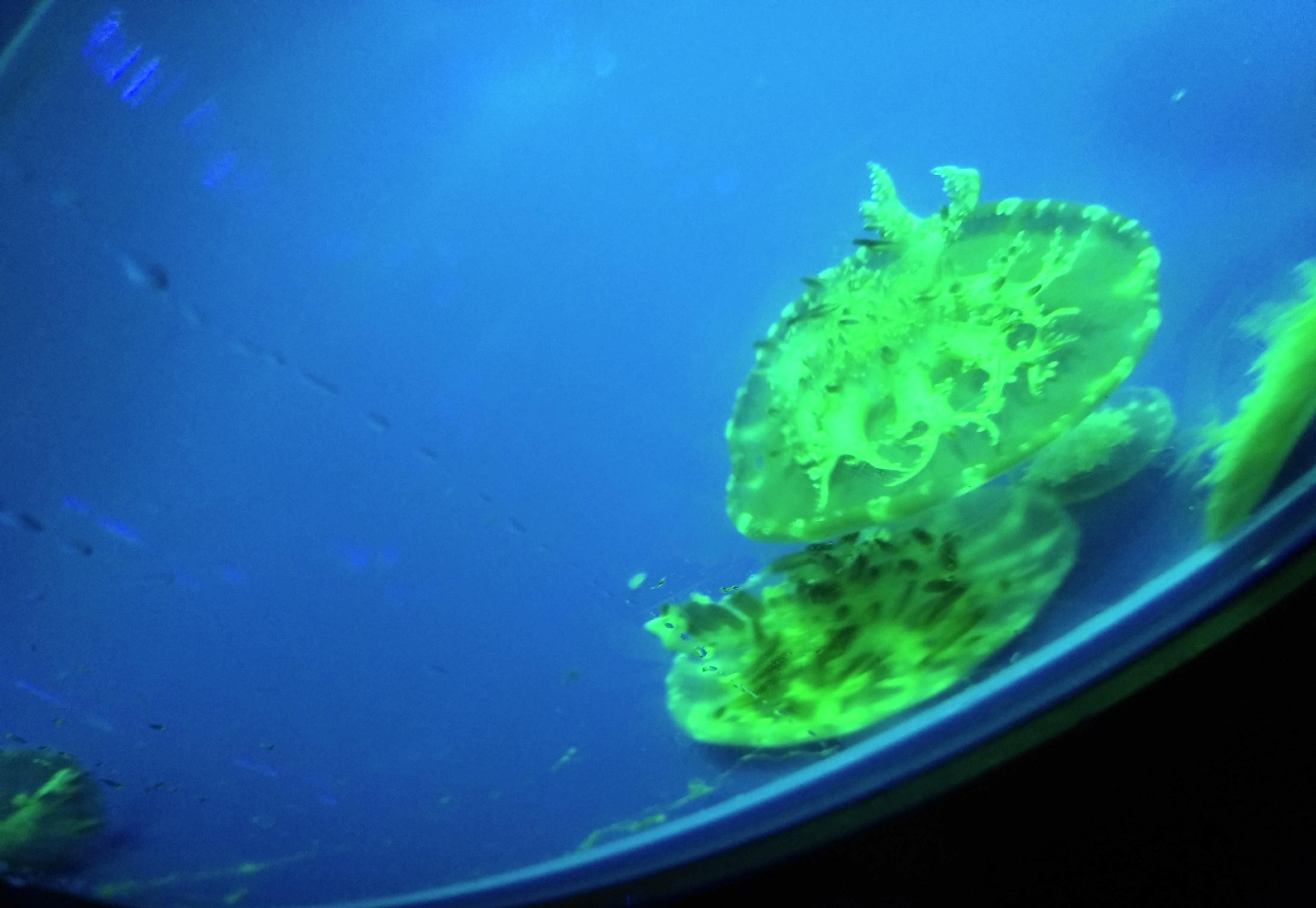People who often go to the beach know that jellyfish often appear when the sea surface is calm. When the wind is high and the waves are high, not a single jellyfish can be seen. It's no accident that every jellyfish is an excellent weather forecaster!
Although the jellyfish is cute and slow to move, it is very sensitive, and it feels it a dozen hours before the storm comes, and then escapes away from the dangerous sea and escapes to the safe deep sea.

Powerful "umbrella"
The article I wrote a few days ago mentioned that jellyfish have a powerful "umbrella". The 4 or 8 tentacle sacs of the umbrella edge of the bowl jellyfish are its neurosensory centers, which have the functions of light sensitivity, gravity sensing, and chemical sensing. The tentacle sac is a small hollow blind tube that extends outward from the ring tube, the end of which has calcium granules secreted by the endoderm, called balance stones. The outer umbel edge extends at the upper end of the balance sac to form a kasa to protect and cover the balance sac below, which has sensory flaps on both sides and sensory cells and cilia on it. When the body is tilted, the stones at the ends are stimulated with the sensory cilia and cause movement to regulate the balance of the body.
In addition, there are small eyes formed by the ectoderm on the tentacle sac, and the original small eye is only a small socket formed by the inverted inward of epidermal cells, which are distributed with pigment and sensory cells, and the complex small eyes have omental sensory cells and crystals. The eye area is not visible on the outside.
Jellyfish or "weather forecasters"!
The upper and lower umbels of jellyfish tentacles have an outer and inner sensory fossa formed by the inverted epidermis, which is its chemoreceptor. The tentacle sac of the bowl jellyfish has a keen sensory ability, for example, it can feel infrasound waves that are much weaker than sound waves.
Experienced fishermen and seafarers will realize that in a few hours, there will be a storm on the surface, which is due to the air flow in the air and the friction of the waves, which is an infrasound that cannot be detected by people, and the jellyfish can feel and prepare for the storm in advance.
Therefore, certain bowl jellyfish are regarded as indicator organisms that are effective in predicting storms. Bionic scientists have also used its tentacle capsule structure to successfully make a storm predictor, which can successfully predict the arrival, direction, and level of the storm more than ten hours in advance, providing valuable information for navigators.